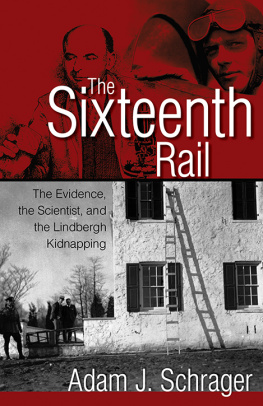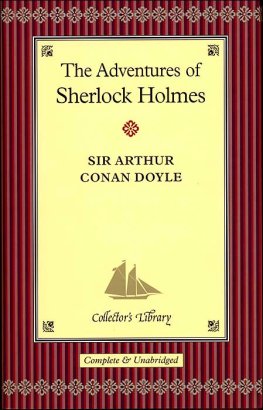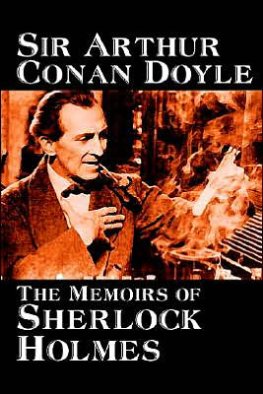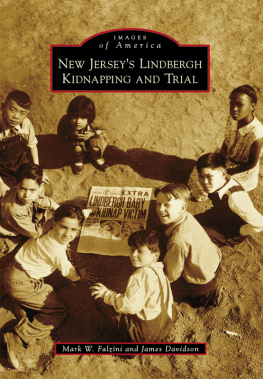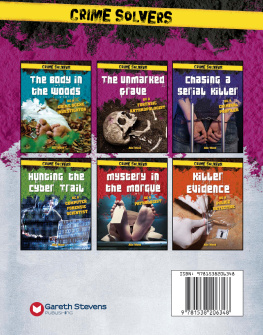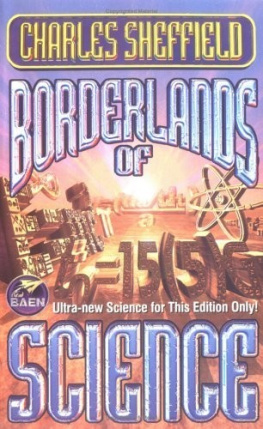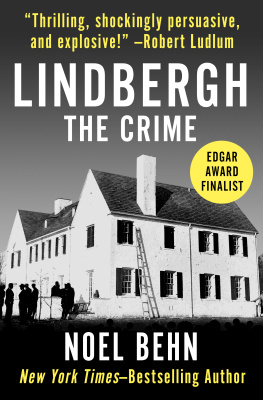The Sixteenth Rail is a compelling read about one of the most notorious crimes of the last century. Adam Schrager digs into the roots of forensics with a gripping tale of a USDA xylotomist who uses his deep knowledge of wood to finger the suspect. In a world where CSI solves crimes by the dozen every night, here is a true tale of a real, mild-mannered guy and his amazing knowledge of all things wood. It is a great story about the unpredictable relevancy of obscure knowledge.
Kirk Johnson, Sant Director, Smithsonian National Museum of Natural History
Industry rightfully spends millions of dollars to stimulate innovation. They should spend some of those millions distributing this book. The modest Arthur Koehler was perhaps the greatest detective innovator of the 20th Century.
Colorado Governor John Hickenlooper
This exceptionally well written book is a must for anyone interested in the Lindbergh Kidnapping and the history of forensic science. Adam Schrager has done a masterful job by providing new information in what is perhaps the greatest forensic case in history.
Paul Dowling, Creator and Executive Producer of Forensic Files
A well-researched, well-written account of Arthur Koehler, the wood expert who has been called the father of forensics and his exacting study of the ladder in the Lindbergh baby kidnapping. The Sixteenth Rail explains how forensic science began expansion into new scientific realms beyond fingerprints and bullet markings. A thoroughly engaging account of the times and the trial.
Dr. Shirley Graham, Curator at the Missouri Botanical Garden
A dedicated government employee of the U.S. Forest Services Forest Products Laboratory, Arthur Koehler, uses keen forensic skills with wood to help solve one of the 20th Centurys greatest crimes. The author masterfully depicts how Koehler, who knew that the wood from trees never really dies, deploys the tenacity of a great detective to make the ladder used in the kidnap of Charles Lindberghs son eventually point to Bruno Hauptmann. The reader is continually captivated by the incredible force and unflinching will Arthur Koehler brings to his scientific craft to coax compelling clues from the rails and styles to help solve one of Americas most horrific crimes.
Michael T. Rains, Acting Director, Forest Product Laboratory
I have never read a book so well researched or with as much depth into the forensic issues of a criminal case. The background on Arthur Koehler, Slim Lindbergh, and the other characters made it such an enjoyable read - which is not typically the case when science is such a large factor in a book. For those of us who have a keen, or even passing, interest in criminal justice cases and particularly forensic science, The Sixteenth Rail is a must read. Arthur Koehler is now on my list of American heroes. I will want to get my hands on more copies to gift my fellow Police friends.
Colonel Mark Trostel, former head of the Colorado State Patrol
The Sixteenth Rail is a riveting chronicle of the investigation and trial that dominated American public life for over two years in the early 1930s -- and the xylotomist (expert on the identification of wood) at the center of that case, Arthur Koehler. In my 12 years as a federal prosecutor, I never encountered a witness remotely like Koehler; he combines unquestioned expertise, precision, and drama. Adam Schrager weaves a compelling tale of forensic science, criminal law, and American history. This incredible true story reads like a novel.
Anthony Barkow, former Federal prosecutor
As Arthur Koehlers granddaughter I grew up hearing his story and knew how it ended. Yet I raced through Mr. Schragers suspenseful and perceptive book, eager to see how it all unfolded: the farm boy turned world-renowned forensic scientist, his meticulous investigations, and the dramatic courtroom testimony. Schragers portrait feels true to the intelligent, conscientious, outdoors-loving man I knew--and I even learned some surprising things about my own grandfather!
Nikki Koehler Guza, Arthur Koehlers granddaughter
Text 2013 Adam Schrager
All rights reserved. No part of this book may be reproduced or transmitted in any form or by any means, electronic or mechanical, including photocopying, recording, or by an information storage and retrieval systemexcept by a reviewer who may quote brief passages in a reviewwithout permission in writing from the publisher.
Library of Congress Cataloging-in-Publication Data
Schrager, Adam.
Sixteenth rail : the evidence, the scientist, and the Lindbergh kidnapping / Adam Schrager.
pages cm
ISBN 978-1-55591-716-6
1. Lindbergh, Charles Augustus, 1930-1932--Kidnapping, 1932. 2. Koehler, Arthur. 3. Kidnapping--New Jersey--Hopewell. 4. Criminal investigation--United States--History--20 th century. 5. Forensic sciences--United States--History--20 th century. I. Title.
HV6603.L5S37 2013
364.154092--dc23
2013003985
Printed in the United States of America
0 9 8 7 6 5 4 3 2 1
Design by Jack Lenzo
Fulcrum Publishing
4690 Table Mountain Dr., Ste. 100
Golden, CO 80403
800-992-2908 303-277-1623
www.fulcrumbooks.com
To Harper, Clark, and Payton
The journey is the reward.
Contents
Prologue
My three older sisters, Julie, Sarina, and Abbey, would assert the roots of this project date back to my G-man fixation during the summer of 1977.
We were driving to the West Coast from the Chicago area, and my reading material for the trip included FBI tales of heroism and ingenuity. My fascination with crime fighting and J. Edgar Hoover was matched only by my love of the Chicago Cubs and outfielder Jos Cardenal.
Roughly six years earlier, a man known as D. B. Cooper hijacked a Northwest Orient Boeing 727 plane and parachuted out somewhere between Seattle and Portland with a $200,000 ransom. He was described as roughly six feet tall, in his mid-forties, and was last seen wearing a dark suit with a white shirt and black tie.
For the three weeks of our trip, every daymultiple times per hour, at timesthis seven-year-old aspiring special agent implored his parents and sisters to call the police anytime we saw a man in a dark suit. The fact that in the five-plus years since the crime he had likely changed outfits at least once was clearly lost on me.
Because my sisters werent interested in solving crimes, I occupied myself on that trip out west by reading. I distinctly remember learning about the kidnapping of Charles A. Lindbergh Jr. and how the subsequent investigation including forensic science sparked a modernizing of the FBI.
So some thirty-five years later, when a colleague of mine at Wisconsin Public Television mentioned to me that the ladder used in the Lindbergh kidnapping was here in Madison, at the US Forest Products Laboratory, I immediately picked up the phone to learn more.
It turned out the ladder at FPL was only a replica, but the story of Arthur Koehler, who once studied parts of the original ladder there and became, in the words of journalists, the Sherlock Holmes of our era, was new to me.
In fact, Koehler knew far more about botany than Sherlock Holmes did, as I learned from Holmes expert Resa Haile in Janesville, Wisconsin. She provided me with detailed information about how the worlds most famous detective fared in the world of botany. This project would not have gotten off the ground without the help of Rebecca Wallace and Julie Blankenburg at the Forest Products Lab. I greatly appreciate their efforts to find all things Koehler-related in the files there. Their colleague, Dr. Rick Green, challenged me from the get-go to ask questions, dig deeper, and probe further. I hope the efforts displayed here meet his high standards of approval.

